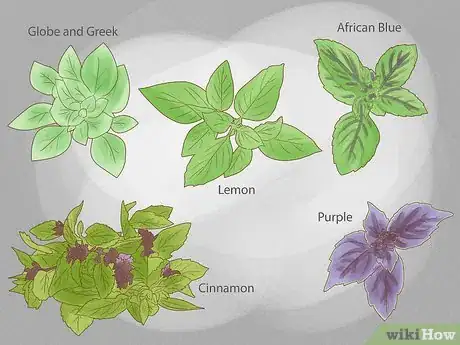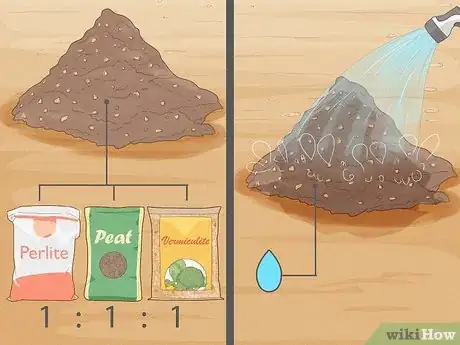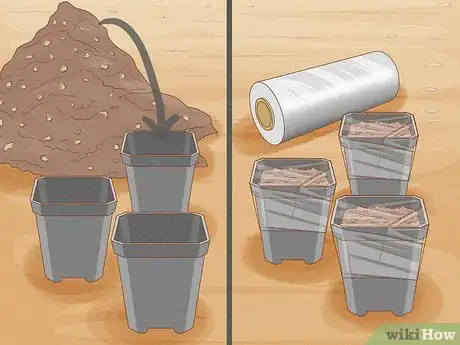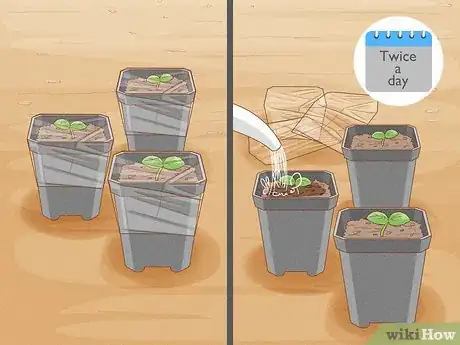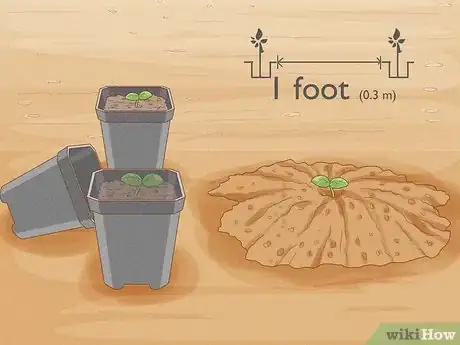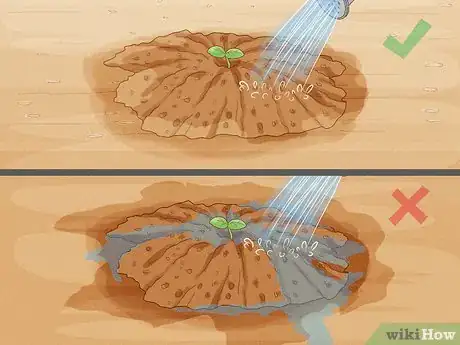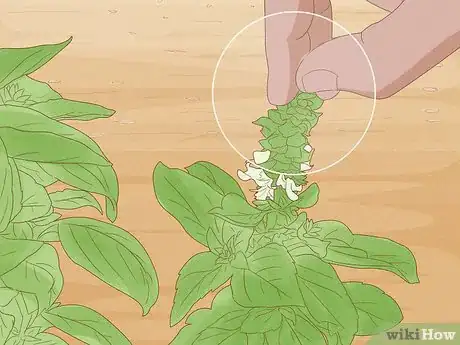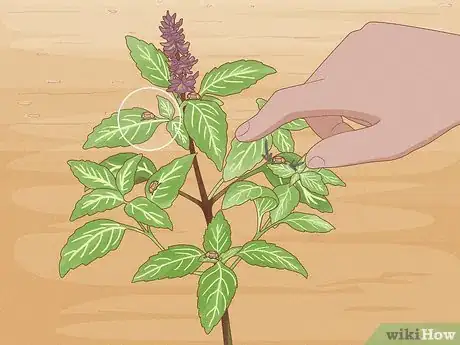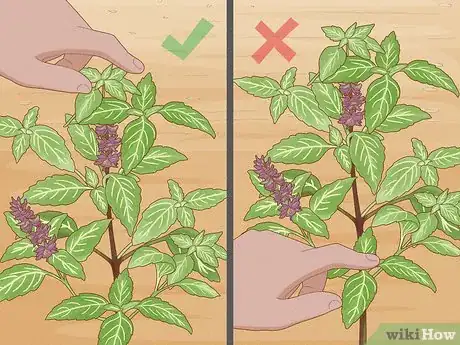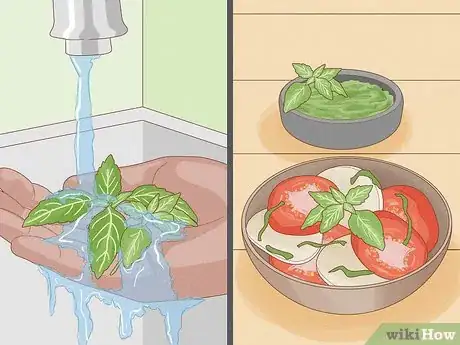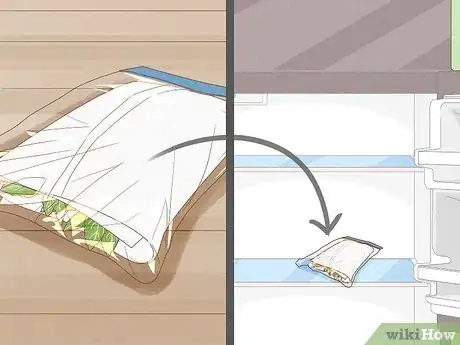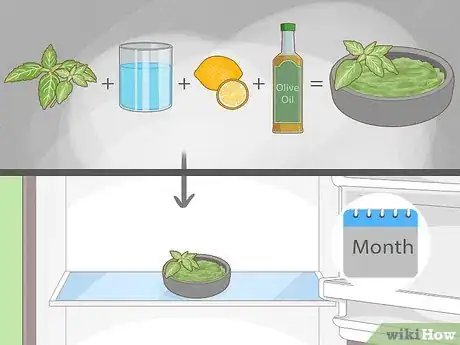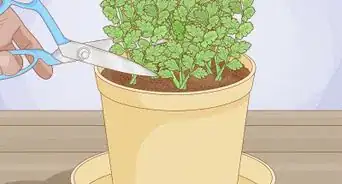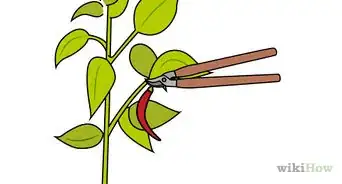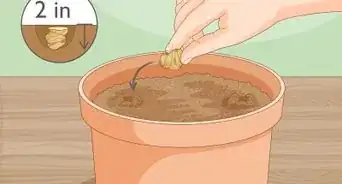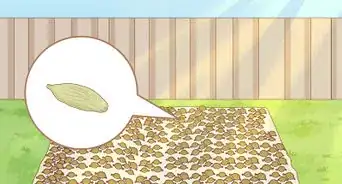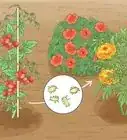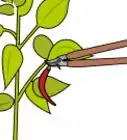This article was co-authored by Andrew Carberry, MPH. Andrew Carberry is a Food Systems Expert and the Senior Program Associate at the Wallace Centere at Winrock International in Little Rock, Arkansas. He has worked in food systems since 2008 and has experience working on farm-to-school projects, food safety programs, and working with local and state coalitions in Arkansas. He is a graduate of the College of William and Mary and holds a Masters degree in public health and nutrition from the University of Tennessee.
wikiHow marks an article as reader-approved once it receives enough positive feedback. This article received 22 testimonials and 100% of readers who voted found it helpful, earning it our reader-approved status.
This article has been viewed 773,690 times.
Basil is easy to grow, and transforms ordinary meals into culinary treasures! Fresh basil not only tastes better than dried, it actually tastes different, almost as if it were not the same herb. This article outlines how to plant and harvest basil.
Steps
Starting Seeds
-
1Choose the kind of basil you wish to grow. Basil comes in many different varieties, each of which has a unique flavor and smell. Read up on different types of basil and pick out one - or several - that appeal to you, then order the seeds or buy them at a garden store. Here are a few ideas:
- Cinnamon basil really does smell like the sweet spice, and it also has unusually beautiful and fragrant flowers.
- Lemon basil actually contains citral, an aromatic compound found in citrus fruit, and smells very lemony.
- Purple basil is often grown for decoration, as well as its scent and flowers.
- There are perennial basils which come back year after year, like African Blue Basil (which has pretty blue veins on its leaves) and Thai Basil, while most other varieties are annuals, which you'll have to plant year after year.
- Globe and Greek basil are much more difficult to grow, but form pretty little bushes which stay well-contained.
-
2Start seed indoors four to six weeks before the last frost. Basil needs warm air and sun to do well, so it's often easiest to start the seeds indoors instead of risking that they'll get damaged by frost.
- If you live in a hot climate, you can start the seeds outside instead.
- To figure out when the last frost will be, consult an almanac or talk with other gardeners in your area.
Advertisement -
3Prepare seed containers. Fill flats or individual seed containers with a mixture of equal parts perlite, vermiculite, and peat. Press the mixture slightly to eliminate air pockets. Dampen the mixture with water so it's ready to provide the right environment for the basil seeds to germinate.
-
4Plant the seeds. Drop one to two seeds into each container. Cover them lightly with soil. Cover containers with clear plastic kitchen wrap, so they stay moist. Leave the containers in a sunny window. Twice daily, remove the plastic wrap and sprinkle the containers with more water.
- It is important to keep your basil seeds warm after you plant them. You might consider using a heat mat or an overhead lamp to keep them warm.
-
5Remove the plastic wrap when the sprouts emerge. When you see the first green tendrils push up through the soil, it's time to remove the plastic wrap. Keep watering the sprouts twice daily, never letting the soil dry out. When the plants become a few inches tall and their leaves mature, it's time to transplant them to a larger container.
Caring for Basil
-
1Transplant the basil plants. Once two sets of leaves have formed, basil can be planted into the garden or permanent containers. Basil does not tolerate frost so don't plant too early. It's best to put basil somewhere where it will get a good deal of sunshine and have well-drained soil.
- To plant the basil in the garden, dig holes spaced at least 1 foot (0.3 m) apart. Place the roots in the holes and place soil around the stems. Pat down soil around the plants to eliminate air pockets.
- If you want to plant the basil in a container, make sure it's large enough to accommodate the number of plants you're growing; they need to be planted 1 foot (0.3 m) apart, since they grow quite large.
-
2Keep the soil damp, but not soaked. Basil does best in well-drained soil, and should not be subjected to standing water. Water the mature basil plants once a day, in the morning, so the water has time to soak in and evaporate rather than sitting on the plants overnight.
-
3Pinch off flower heads. When you see flower buds, pinch them and two pairs of leaves under them off. Flowers blooming create a hormone change which dramatically reduces the flavor of the leaves, as well as reducing the amount of foliage that grows. This is called "bolting" and is more likely to happen when there's extra sunshine. You'll notice that if you leave the flowers, the plant will become lanky and the leaves won't be as full or tasty.
-
4Watch for pests and mold. Basil plants are attractive to Japanese beetles; the best way to control these pests is to pick them off the plants by hand. If your plants show signs of mold growth, they may not be getting adequate sunlight, or they may be too close together. Weed out the smaller plants to give the larger ones more space.
Harvesting and Using Basil
-
1Harvest and prune.[1] As the plant matures, pinch off the top two pairs of leaves once a stalk reaches a reasonable height. If you look closely, at the base of every leaf are two tiny little leaves that will grow outwards if the stem growing between them is cut off. Cut close to those tiny leaves, but be sure not to damage them.
- Pinching encourages the plant's energy to be directed into its stronger stems and leaves. This helps the plants grow bushy.
- Don't pinch on the lower part of the stem, or the basil plants will grow tall and reedy. You want them to get bushy, so pinch from the top.
-
2Enjoy the basil fresh. Rinse off the leaves and use the basil to make pesto or a Caprese salad with tomatoes and fresh mozzarella cheese.
-
3Store the basil in the refrigerator. You'll probably have more basil than you could possibly eat fresh, so plan on storing some in the fridge. Wash the leaves, dry them well, and wrap them in paper towels. Place them in a food storage container with an airtight lid.
-
4Freeze the basil. Freezing the leaves whole doesn't work very well, but if you puree it first or turn it into pesto before freezing, then you can store your basil in the freezer for months. Place the basil in a blender with a little water, lemon juice, and/or olive oil. Puree it until smooth, then put it in a food storage bag and freeze until you need it.
Expert Q&A
Did you know you can get premium answers for this article?
Unlock premium answers by supporting wikiHow
-
QuestionWill the basil plant continue to grow if the stem was cut off below the bottom leaves?
 Andrew Carberry, MPHAndrew Carberry is a Food Systems Expert and the Senior Program Associate at the Wallace Centere at Winrock International in Little Rock, Arkansas. He has worked in food systems since 2008 and has experience working on farm-to-school projects, food safety programs, and working with local and state coalitions in Arkansas. He is a graduate of the College of William and Mary and holds a Masters degree in public health and nutrition from the University of Tennessee.
Andrew Carberry, MPHAndrew Carberry is a Food Systems Expert and the Senior Program Associate at the Wallace Centere at Winrock International in Little Rock, Arkansas. He has worked in food systems since 2008 and has experience working on farm-to-school projects, food safety programs, and working with local and state coalitions in Arkansas. He is a graduate of the College of William and Mary and holds a Masters degree in public health and nutrition from the University of Tennessee.
Food Systems Expert
-
QuestionHow deep should the soil be when planting basil in a pot?
 Andrew Carberry, MPHAndrew Carberry is a Food Systems Expert and the Senior Program Associate at the Wallace Centere at Winrock International in Little Rock, Arkansas. He has worked in food systems since 2008 and has experience working on farm-to-school projects, food safety programs, and working with local and state coalitions in Arkansas. He is a graduate of the College of William and Mary and holds a Masters degree in public health and nutrition from the University of Tennessee.
Andrew Carberry, MPHAndrew Carberry is a Food Systems Expert and the Senior Program Associate at the Wallace Centere at Winrock International in Little Rock, Arkansas. He has worked in food systems since 2008 and has experience working on farm-to-school projects, food safety programs, and working with local and state coalitions in Arkansas. He is a graduate of the College of William and Mary and holds a Masters degree in public health and nutrition from the University of Tennessee.
Food Systems Expert
-
QuestionHow often should I water basil?
 wikiHow Staff EditorThis answer was written by one of our trained team of researchers who validated it for accuracy and comprehensiveness.
wikiHow Staff EditorThis answer was written by one of our trained team of researchers who validated it for accuracy and comprehensiveness.
Staff Answer wikiHow Staff EditorStaff Answer
wikiHow Staff EditorStaff Answer
Warnings
- When watering, avoid getting the leaves wet, unless you are doing foliar feeding, as the leaves can spot.⧼thumbs_response⧽
- When moving plants from indoors to the garden, make sure you gradually expose the basil to outdoor conditions to avoid transplant shock.⧼thumbs_response⧽
- Do not overlook this opportunity to choose one of the many astounding varieties which might be most fun or useful for you⧼thumbs_response⧽
About This Article
To plant basil, fill a seed container with perlite, vermiculite, and peat, dampen it with water, and drop in 1-2 seeds. Cover them with a bit of soil, wrap the container in plastic wrap, and place it in a sunny window. Sprinkle it with water twice a day. Remove the plastic wrap when a sprout emerges and move the plant to a garden or permanent container, watering every morning. Pinch off flower heads when they bloom and pick off any Japanese beetles you see. To harvest, cut off the top 2 pairs of leaves at a time, rinse, and enjoy. To learn more from our Food Systems Expert co-author, like how to use or store the basil after harvest, keep reading the article!
